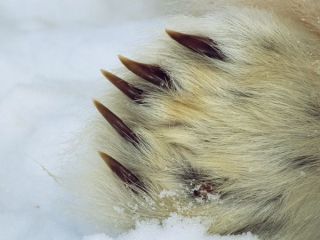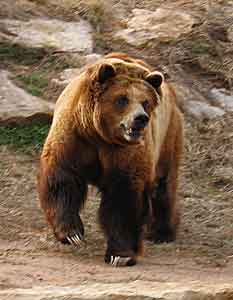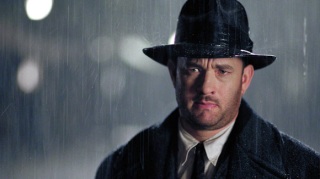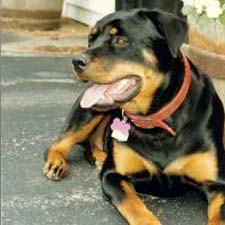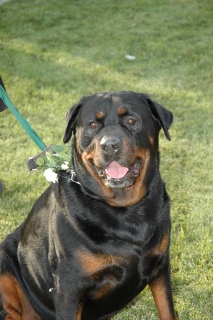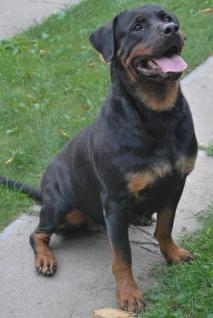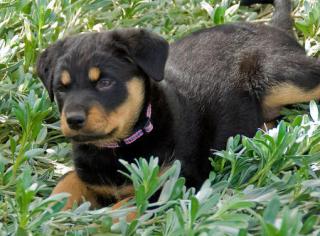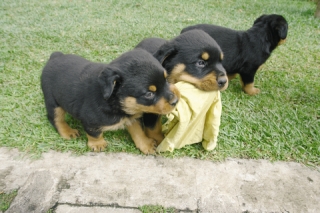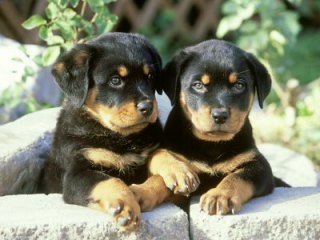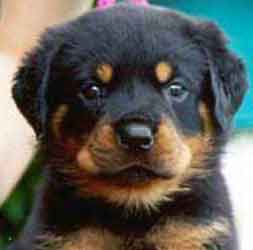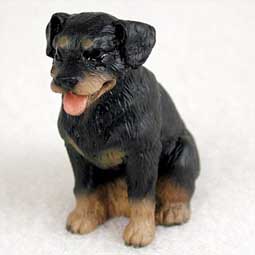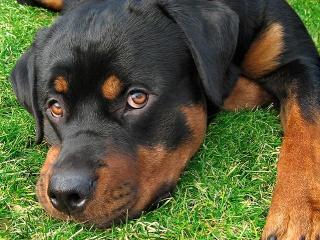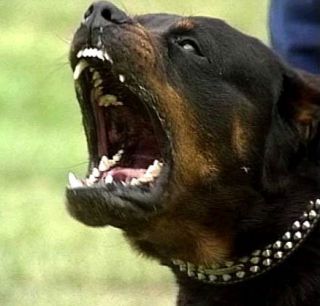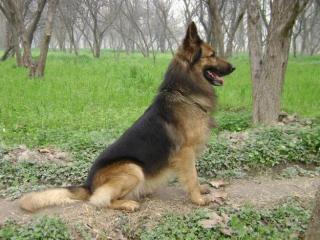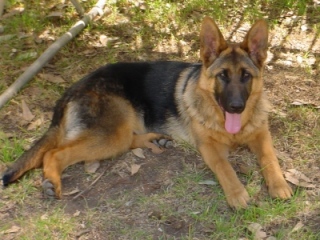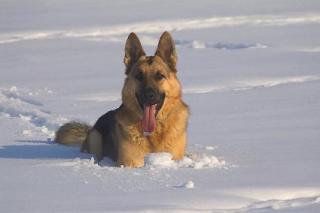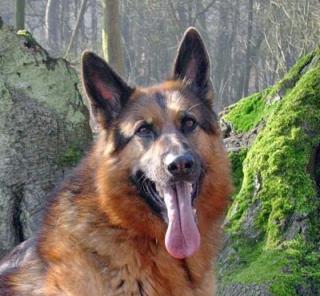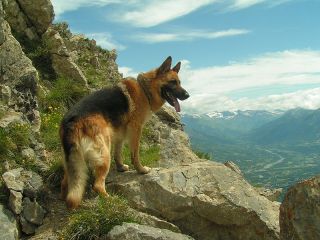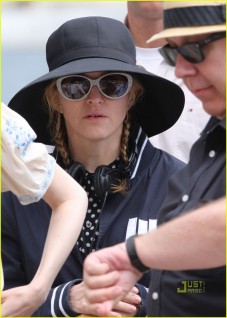The German Shepherd Dog (also known as an Alsatian; German: Deutscher Schäferhund or just the German Shepherd) is a breed of large-sized dog that originated in Germany. The German Shepherd is a relatively new breed of dog, with its origin dating to 1899. As part of the Herding Group, the German Shepherd is a working dog developed originally for herding and guarding sheep. Because of its strength, intelligence and abilities in obedience training it is often employed in police and military roles around the world. German Shepherds currently account for 4.6% of all dogs registered with the American Kennel Club. Due to its loyal and protective nature, the German Shepherd is one of the most registered of breeds.
History :
Origins :
In Europe during the 1800s, attempts were being made to standardise breeds. The dogs were bred to preserve traits that assisted in their job of herding sheep and protecting flocks from predators. In Germany this was practiced within local communities, where shepherds selected and bred dogs that they believed had traits necessary for herding sheep, such as intelligence, speed, strength, and keen senses of smell. The results were dogs that were able to perform admirably in their task, but that differed significantly, both in appearance and ability, from one locality to another.
To combat these differences, the Phylax Society was formed in 1891 with the intention of creating standardised dog breeds in Germany. The society disbanded after only three years due to ongoing internal conflicts regarding the traits in dogs that the society should promote; some members believed dogs should be bred solely for working purposes, while others believed dogs should be bred also for appearance. While unsuccessful in their goal, the Phylax Society had inspired people to pursue standardising dog breeds independently
 Max von Stephanitz, an ex-cavalry captain and former student of the Berlin Veterinary College, was one such ex-member. He believed strongly that dogs should be bred for working.
Max von Stephanitz, an ex-cavalry captain and former student of the Berlin Veterinary College, was one such ex-member. He believed strongly that dogs should be bred for working.
In 1899, Von Stephanitz was attending a dog show when he was shown a dog named Hektor Linksrhein. Hektor was the product of few generations of selective breeding and completely fulfilled what Von Stephanitz believed a working dog should be. He was pleased with the strength of the dog and was so taken by the animal’s intelligence and loyalty, that he purchased it immediately. After purchasing the dog he changed its name to Horand von Grafrath and Von Stephanitz founded the Verein für Deutsche Schäferhunde (Society for the German Shepherd Dog). Horand was declared to be the first German Shepherd Dog and was the first dog added to the society’s breed register.
Horand became the centre-point of the breeding programs and was bred with dogs belonging to other society members that displayed desirable traits. Although fathering many pups, Horand’s most successful was Hektor von Schwaben. Hektor was inbred with another of Horand’s offspring and produced Beowulf, who later fathered a total of eighty-four pups, mostly through being inbred with Hektor’s other offspring. In the original German Shepherd studbook, Zuchtbuch fur Deutsche Schaferhunde (SZ), within the 2 pages of entries from SZ #41 to SZ #76, there are 4 Wolf Crosses. Beowulf’s progeny also were inbred and it is from these pups that all German Shepherds draw a genetic link. It is believed the society accomplished its goal mostly due to Von Stephanitz’s strong, uncompromising leadership and he is therefore credited with being the creator of the German Shepherd Dog
Popularity :
When the UK Kennel Club first accepted registrations for the breed in 1919, fifty-four dogs were registered, and by 1926 this number had grown to over 8,000. The breed first gained international recognition at the decline of World War I after returning soldiers spoke highly of the breed, and animal actors Rin Tin Tin and Strongheart popularised the breed further. The first German Shepherd Dog registered in the United States was Queen of Switzerland; however, her offspring suffered from defects as the result of poor breeding, which caused the breed to suffer a decline in popularity during the late 1920s.
Popularity increased again after the German Shepherd Sieger Pfeffer von Bern became the 1937 and 1938 Grand Victor in American Kennel club dog shows, only to suffer another decline at the conclusion of World War II, due to anti-German sentiment of the time. As time progressed, their popularity increased gradually until 1993, when they became the third most popular breed in the United States. As of 2009, the breed was the second most popular in the US. Additionally, the breed is typically among the most popular in other registries. The German Shepherd Dog’s physique is very well suited to athletic competition. They commonly compete in shows and competitions such as agility trials.
Name :
The breed was named Deutscher Schäferhund by Von Stephanitz, literally translating to “German Shepherd Dog”. The breed was so named due to its original purpose of assisting shepherds in herding and protecting sheep. At the time, all other herding dogs in Germany were referred to by this name; they thus became known as Altdeutsche Schäferhunde or Old German Shepherd Dogs. Shepherds were first exported to Britain in 1908, and the UK Kennel Club began to recognise the breed in 1919.
The direct translation of the name was adopted for use in the official breed registry; however, at the conclusion of World War I, it was believed that the inclusion of the word “German” would harm the breed’s popularity, due to the anti-German sentiment of the era. The breed was officially renamed by the UK Kennel Club to “Alsatian Wolf Dog” which was also adopted by many other international kennel clubs. Eventually, the appendage “wolf dog” was dropped. The name Alsatian remained for five decades, until 1977, when successful campaigns by dog enthusiasts pressured the British kennel clubs to allow the breed to be registered again as German Shepherd Dogs. The word “Alsatian” still appeared in parentheses as part of the formal breed name and was only removed in 2010.
Modern breed :
The modern German Shepherd is criticized for straying away from von Stephanitz’s original ideology for the breed: that German Shepherds should be bred primarily as working dogs, and that breeding should be strictly controlled to eliminate defects quickly. Critics believe that careless breeding has promoted disease and other defects. Under the breeding programs overseen by von Stephanitz, defects were quickly bred out; however, in modern times without regulation on breeding, genetic problems such as color-paling, hip dysplasia, monorchidism, weakness of temperament, and missing teeth are common, as well as bent or folded ears which never fully turn up when reaching adulthood
Description :
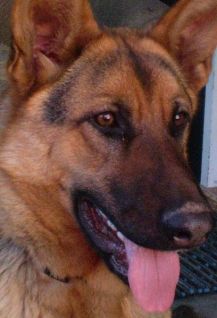 German Shepherds are a large sized dog which generally are between 55 and 65 centimetres (22 and 26 in) at the withers and weigh between 22 and 40 kilograms (49 and 88 lb). The ideal height is 63 centimetres (25 in), according to Kennel Club standards. They have a domed forehead, a long square-cut muzzle and a black nose. The jaws are strong, with a scissor-like bite. The eyes are medium-sized and brown with a lively, intelligent, and self-assured look. The ears are large and stand erect, open at the front and parallel, but they often are pulled back during movement. They have a long neck, which is raised when excited and lowered when moving at a fast pace. The tail is bushy and reaches to the hock
German Shepherds are a large sized dog which generally are between 55 and 65 centimetres (22 and 26 in) at the withers and weigh between 22 and 40 kilograms (49 and 88 lb). The ideal height is 63 centimetres (25 in), according to Kennel Club standards. They have a domed forehead, a long square-cut muzzle and a black nose. The jaws are strong, with a scissor-like bite. The eyes are medium-sized and brown with a lively, intelligent, and self-assured look. The ears are large and stand erect, open at the front and parallel, but they often are pulled back during movement. They have a long neck, which is raised when excited and lowered when moving at a fast pace. The tail is bushy and reaches to the hock
German Shepherds can be a variety of colors, the most common of which are the red, tan, brown, black, tan/black and red/black varieties. Both varieties have black masks and black body markings which can range from a classic “saddle” to an over-all “blanket.” Rarer colour variations include the sable, all-black, all-white, liver, and blue varieties. The all-black and sable varieties are acceptable according to most standards; however, the blue and liver are considered to be serious faults and the all-white is grounds for instant disqualification in some standards.
German Shepherds sport a double coat. The outer coat, which is shed all year round, is close and dense with a thick undercoat. The coat is accepted in two variants; medium and long. The long-hair gene is recessive, making the long-hair variety rarer. Treatment of the long-hair variation differs across standards; they are accepted under the German and UK Kennel Clubs but are considered a fault in the American Kennel Club.
 Intelligence :
Intelligence :
German Shepherds were bred specifically for their intelligence, a trait for which they are now renowned. They are considered to be the third most intelligent breed of dog, behind Border Collies and Poodles. In the book The Intelligence of Dogs, author Stanley Coren ranked the breed third for intelligence. He found that they had the ability to learn simple tasks after only five repetitions and obeyed the first command given 95% of the time. Coupled with their strength, this trait makes the breed desirable as police, guard, and search and rescue dogs, as they are able to quickly learn various tasks and interpret instructions better than other large breeds.
Aggression and biting :
German Shepherd Dogs are among the top five most popular dogs in the United States according to American Kennel Club statistics and well-trained and socialized German Shepherd Dogs have a reputation among many as being very safe (see temperament section below). In the United States, one source suggests that German Shepherd Dogs are responsible for more reported bitings than any other breed, and suggest a tendency to attack smaller breeds of dogs.
An Australian report from 1999 provides statistics showing that German Shepherd Dogs are the third breed most likely to attack a person in some Australian locales.
However, the Centers for Disease Control and Prevention, which advises on dog bite prevention and related matters, states “There is currently no accurate way to identify the number of dogs of a particular breed, and consequently no measure to determine which breeds are more likely to bite or kill.”

Similarly, the American Veterinary Medical Association through its Task Force on Canine Aggression and Canine-Human Interactions reports, “There are several reasons why it is not possible to calculate a bite rate for a breed or to compare rates between breeds. First, the breed of the biting dog may not be accurately recorded, and mixed-breed dogs are commonly described as if they were purebreds. Second, the actual number of bites that occur in a community is not known, especially if they did not result in serious injury. Third, the number of dogs of a particular breed or combination of breeds in a community is not known, because it is rare for all dogs in a community to be licensed, and existing licensing data is then incomplete.” Moreover, studies rely on ‘reported’ bites, leading the National Geographic Channel television show The Dog Whisperer to conclude that small dog breeds are likely responsible for more bites than large dog breeds, but often go unreported.
In addition, according to the National Geographic Channel television show, Dangerous Encounters, the bite of a German Shepherd Dog has a force of over 238 pounds (~108 kilograms) (compared with that of a Rottweiler, over 265-328 pounds (~120-149 kilograms) of force, a Pit bull, 235 pounds (~107 kilograms) of force, a Labrador Retriever, of approximately 230 pounds (~104 kilograms) of force, or a human, of approximately 86 pounds (~39 kilograms) of force). Regardless, one source indicates that fatalities have been attributed to over 30 breeds since 1975, including small breeds, such as the Pomeranian.
 Temperament :
Temperament :
German Shepherds are highly active dogs, and described in breed standards as self-assured. The breed is marked by a willingness to learn and an eagerness to have a purpose. Shepherds have a loyal nature and bond well with people they know. However, they can become over-protective of their family and territory, especially if not socialized correctly. They are not inclined to become immediate friends with strangers. German Shepherds are highly intelligent and obedient. Some people believe they require a “firm hand”, but more recent research into training methods has shown they respond better to positive, reward based training methods.
Health :
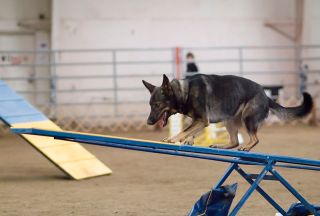 Many common ailments of the German Shepherds are a result of the inbreeding required early in the breed’s life. One such common issue is hip and elbow dysplasia which may lead to the dog experiencing pain in later life, and may cause arthritis. A study by the University of Zurich in police working dogs found that 45% were affected by degenerative spinal stenosis, although the sample studied was small. The Orthopedic Foundation for Animals found that 19.1% of German Shepherd are affected by hip dysplasia. Due to the large and open nature of their ears, Shepherds are prone to ear infections.German Shepherds, like all large bodied dogs, are prone to bloat.
Many common ailments of the German Shepherds are a result of the inbreeding required early in the breed’s life. One such common issue is hip and elbow dysplasia which may lead to the dog experiencing pain in later life, and may cause arthritis. A study by the University of Zurich in police working dogs found that 45% were affected by degenerative spinal stenosis, although the sample studied was small. The Orthopedic Foundation for Animals found that 19.1% of German Shepherd are affected by hip dysplasia. Due to the large and open nature of their ears, Shepherds are prone to ear infections.German Shepherds, like all large bodied dogs, are prone to bloat.
The average lifespan of a German Shepherd is 9.7 years, which is normal for a dog of their size. Degenerative myelopathy, a neurological disease, occurs with enough regularity specifically in the breed to suggest that the breed is predisposed to it. Additionally, German Shepherd Dogs have a higher than normal incidence of Von Willebrand Disease, a common inherited bleeding disorder.
Controversy :
The Kennel Club is currently embroiled in a dispute with German Shepherd breed clubs about the issue of soundness in the show-strain breed. The show-strains have been bred with an extremely sloping back that causes poor gait and disease in the hind legs. Working-pedigree lines, such as those in common use as service dogs, generally retain the traditional straight back of the breed and do not suffer these problems to the same extent. The debate was catalyzed when the issue was raised in the BBC documentary, Pedigree Dogs Exposed, which said that critics of the breed describe it as “half dog, half frog”. An orthopedic vet remarked on footage of dogs in a show ring that they were “not normal”.
The Kennel Club’s position is that “this issue of soundness is not a simple difference of opinion, it is the fundamental issue of the breed’s essential conformation and movement.” The Kennel Club has decided to retrain judges to penalize dogs suffering these problems. It is also insisting on more testing for hemophilia and hip dysplasia, other common problems with the breed.
Breed clubs have typically responded that they feel they are being vilified for issues they were already aware of and attempting to address before the media storm erupted.
Use as working dogs :
German Shepherds are a very popular selection for use as working dogs. They are especially well known for their police work, being used for tracking criminals, patrolling troubled areas, and detection and holding of suspects. Additionally thousands of German Shepherds have been used by the military. Usually trained for scout duty, they are used to warn soldiers to the presence of enemies or of booby traps or other hazards. German Shepherds have also been trained by military groups to parachute from aircraft.
 The German Shepherd Dog is one of the most widely used breeds in a wide variety of scent-work roles. These include search and rescue, cadaver searching, narcotics detection, explosives detection, accelerant detection, and mine detection dog, among others. They are suited for these lines of work because of their keen sense of smell and their ability to work regardless of distractions.
The German Shepherd Dog is one of the most widely used breeds in a wide variety of scent-work roles. These include search and rescue, cadaver searching, narcotics detection, explosives detection, accelerant detection, and mine detection dog, among others. They are suited for these lines of work because of their keen sense of smell and their ability to work regardless of distractions.
At one time the German Shepherd Dog was the breed chosen almost exclusively to be used as a guide dog for the visually impaired. In recent years, Labradors and Golden Retrievers have been more widely used for this work, although there are still German Shepherds being trained. A versatile breed, they excel in this field due to their strong sense of duty, their mental abilities, their fearlessness, and their attachment to their owner.
German Shepherd Dogs are used for herding and tending sheep grazing in meadows next to gardens and crop fields. They are expected to patrol the boundaries to keep sheep from trespassing and damaging the crops. In Germany and other places these skills are tested in utility dog trials also known as HGH (Herdengebrauchshund) herding utility dog trials.


